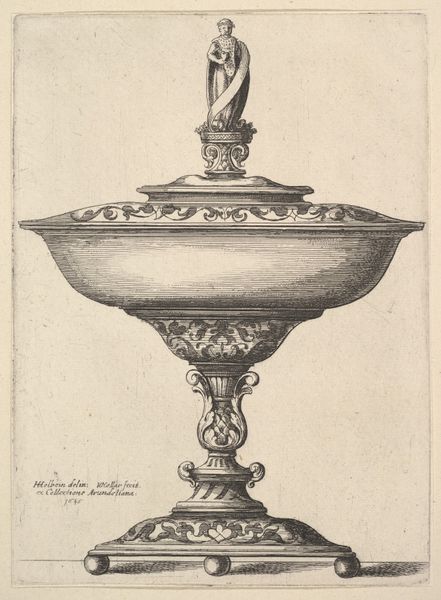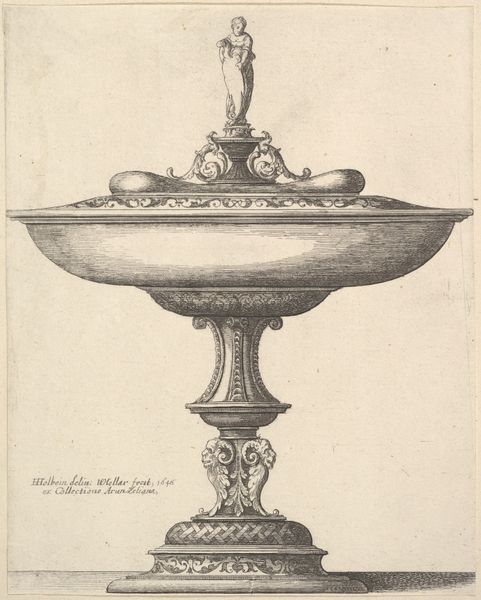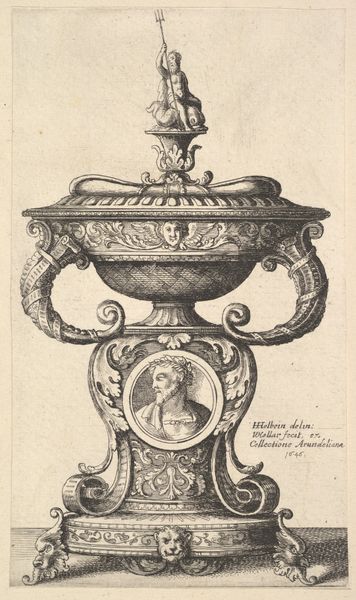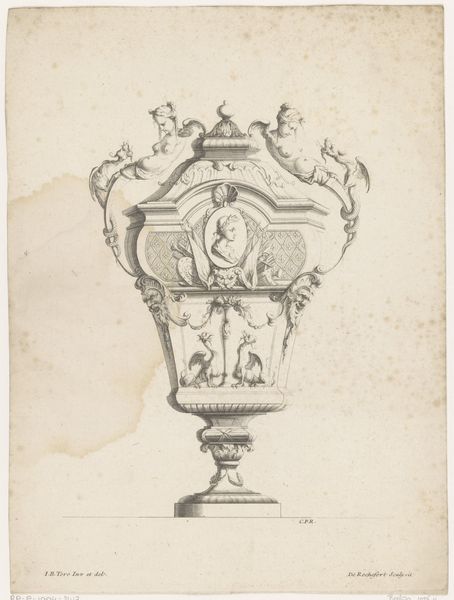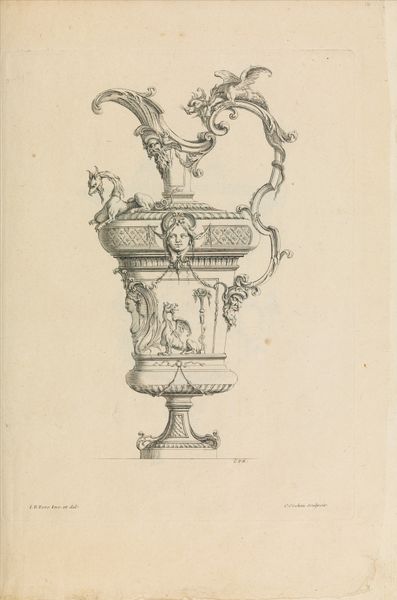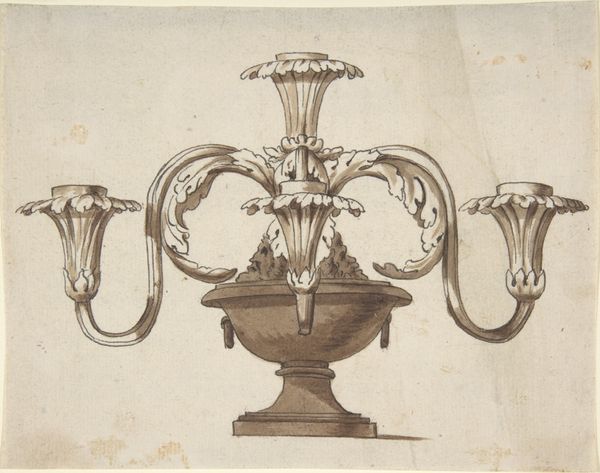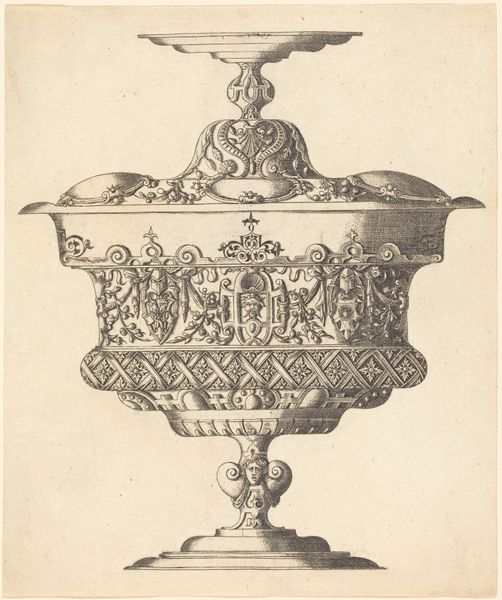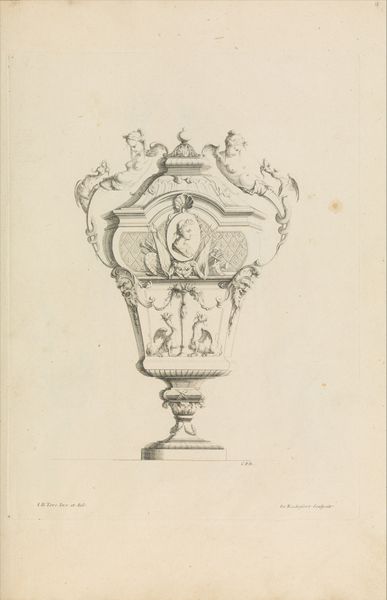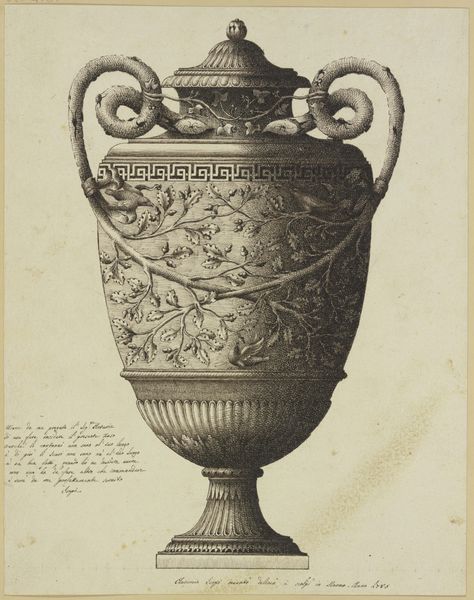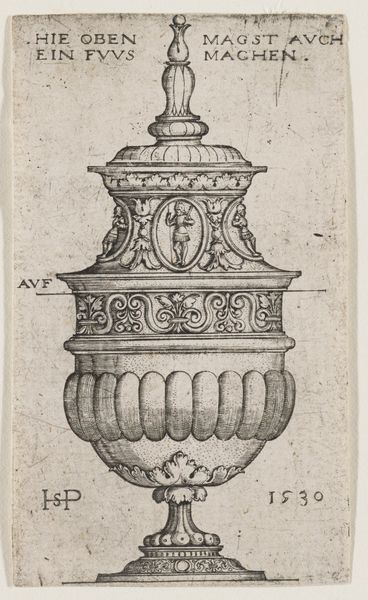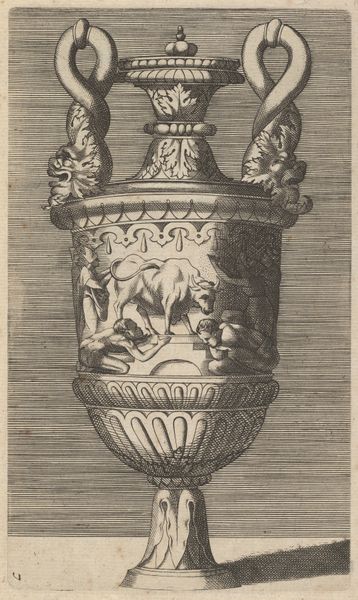
drawing, print, etching, glass, ink
#
drawing
#
baroque
# print
#
etching
#
glass
#
ink
Dimensions: Plate: 7 1/2 × 4 5/8 in. (19.1 × 11.7 cm) Sheet: 7 5/8 × 4 11/16 in. (19.4 × 11.9 cm)
Copyright: Public Domain
This etching of an ornate goblet was made by Wenceslaus Hollar in 1645. As a printmaker, Hollar was a master of translating three-dimensional objects into two-dimensional images, using a technique that demanded precision and control. The goblet, elevated on a base of stylized masks, showcases the height of baroque metalwork. It would have been formed through the skilled labor of hammering, chasing, and engraving. Note the intricate details, which highlight the artisan's mastery over their material. The etching process itself mirrors this craftsmanship. Hollar used careful lines to mimic the glint of light on metal, the weight and substance of the material. In doing so, he invites us to appreciate not only the goblet's aesthetic qualities but also the skill, time, and social context embedded in its creation. Hollar asks us to consider both the artistry of the original object and his own labor in replicating it.
Comments
No comments
Be the first to comment and join the conversation on the ultimate creative platform.
